To commemorate the hundredth anniversary of the Sioux Uprising in 1962, the St. Paul Pioneer Press published "The Picture Story of the Sioux Uprising" by Jerry Fearing. The cartoon sets below are taken from that much larger work.
To read the full story (in pdf format), click on the following link: The Picture Story of the Sioux Uprising
Excerpts from Fearing's cartoon history are below:
Cartoon Set 1: Trials and Execution
Cartoon Set 2: First Violence
Cartoon Set 3: Last Battle & Surrender
Set 1:Trials and Executions

On September 28, 1862, two days after the Indians released their white prisoners to Col. Sibley, a military court began trying the Sioux braves. Five officers, with the Rev. Stephen Riggs as interpreter, were to decide which warriors were guilty of taking part in the uprising.
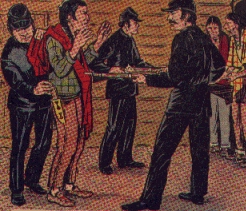
Various promises and threats were used to gain the surrender of the hundreds of Sioux in the area. Some were tricked into gathering at the upper agency for "an annuity payment"--- only to be disarmed and held for trial.

From Sept. 28 to November 3 almost 400 Indians were tried. A total of 303 were condemned to death. The slightest suspicion that a warrior had been at any of the battles automatically brought the death sentence.
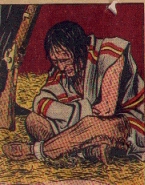
True terrible crimes had been committed by the Sioux. But those guilty of the worst had escaped. Many of the Indians who remained had little to do with the war. Some had even helped the white prisoners. Yet the common cry was "Annihilate the Sioux!"
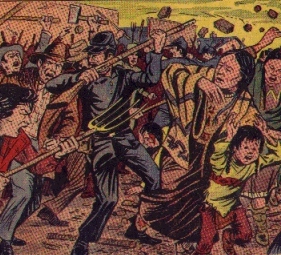
On Nov. 7, more than a thousand Indians, mostly women and children, were marched from the lower agency to Fort Snelling. In Henderson, townspeople attacked them with clubs and stones. Two days later, the 3030 Indians condemned to die were led, shackled, through New Ulm. They too were attacked.
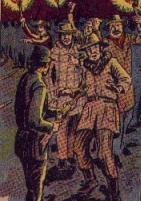
The condemned Indians were taken to Camp Lincoln, a stockade near Mankato. The night of Dec. 4, a mob of 200 armed whites marched on the camp. But the soldiers prevented a mass lynching.

The trial results and names of the condemned Indians were sent to President Lincoln for approval. Instead, Lincoln called for the complete trial records. The state was shocked. Gov. Ramsey telegraphed Lincoln, saying if all the condemned Indians weren't executed, he feared the people would take their own revenge!
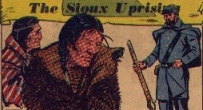
The Soux uprising of Minnesota was over. The warriors had been tried and 303 condemned to death. But President Lincoln, instead of authorizing the executions, asked for the complete trial records so he might review them.
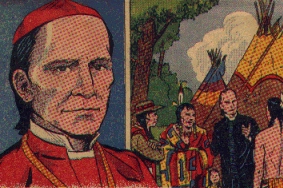
Lincoln acted as he did because he had heard, amid the cries for vengeance, a courageous voice of moderation and reason. It was that of Bishop Henry B. Whipple of the Episcopal church. Bishop Whipple had worked among the Indians since 1859. He knew much about the uprising and its causes.
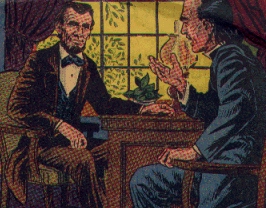
As early as 1860 he had written President Buchanan to point out injustices being done the Indians. He finally went to Washington and told the story of the Sioux uprising personally to Lincoln.
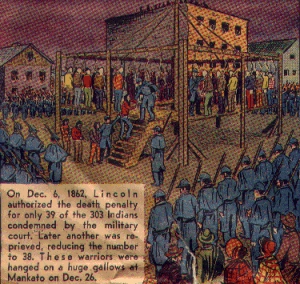
On Dec. 6, 1862, Lincoln authorized the death penalty for only 39 of the 303 Indians condemned by the military court. Later another was reprieved, reducing the number to 38. These warriors were hanged on a huge gallows at Mankato on Dec. 26.
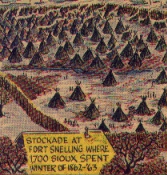
The hundreds of Soux still imprisoned in Fort Snelling and Mankato faced a bleak future. People called for their extermination while officials sought to have them driven from the state. On Feb. 16, 1863, congress cancelled all the treaties, leaving the Sioux without land or money.
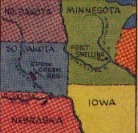
The Federal government then set aside an area in what is now South Dakota as a reservation. The Sioux were moved to this Crow Creek reservation in May of 1863 and found it an unproductive land. After three years of hardship and hunger they were moved again to a more suitable area at the mouth of the Nibrara river in northeastern Nebraska
